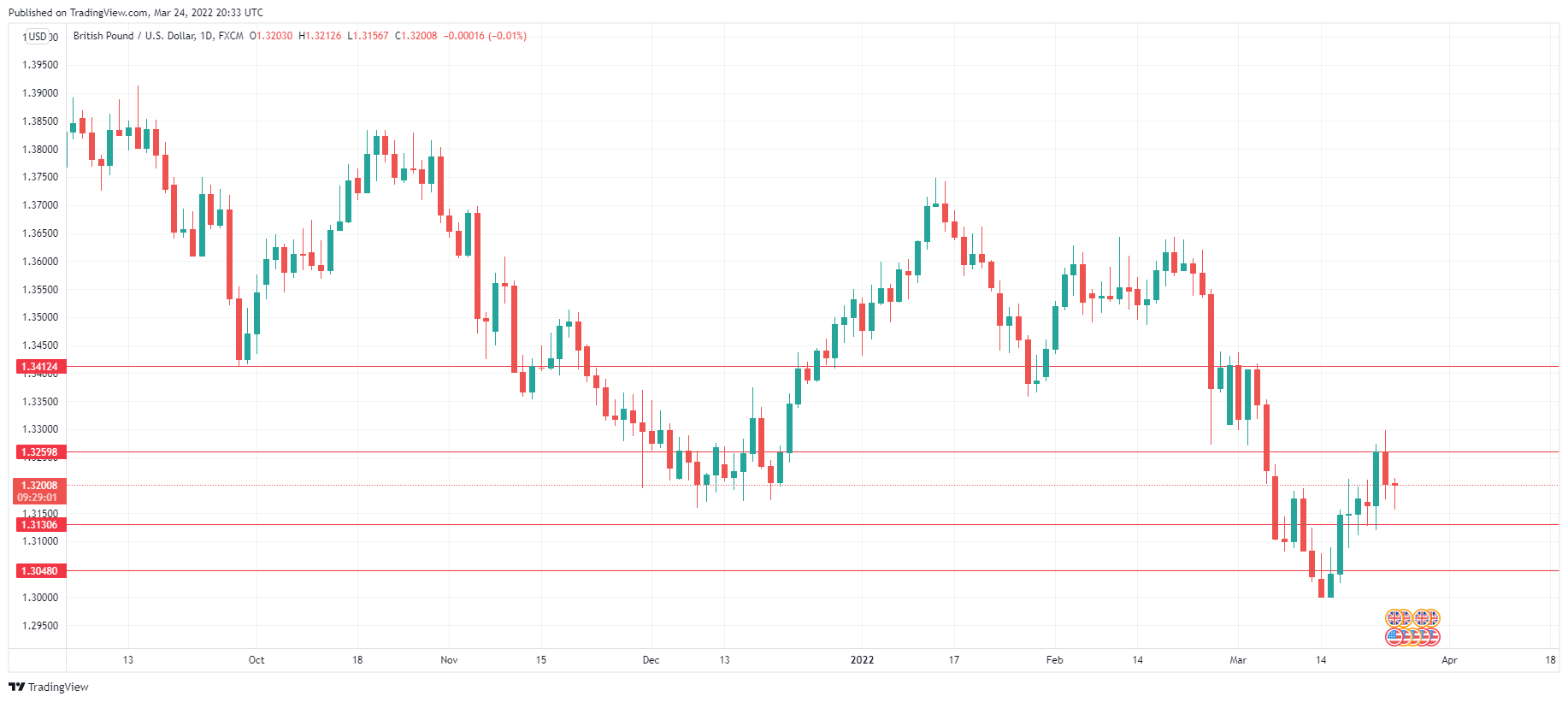The British pound showed some volatility this week, but was flat on Thursday. In the European session, GBP/USD was trading at the round number of 1.3200.
The currency markets had been taking a breather and sticking to the sidelines. The pound lost ground on Wednesday, despite inflation rising in February and exceeding expectations. CPI hit 6.2% YoY, a new 30-year high. This was up from 5.5% in January and above the consensus estimate of 5.9%. Core CPI rose 5.2%, up from 4.4% and ahead of the forecast of 5.0%.
UK inflation powers upwards
The rise in inflation had been driven by soaring food and energy costs and if oil prices continue to rise, inflation will only get worse. The Bank of England had projected that inflation will hit 8% in the second quarter and warned that it could rise to 10% by the end of the year. The Bank raised rates at three successive meetings, from 0.10% to 0.75%, but so far, the tightening hasn’t curbed inflation.
BoE policy makers face an unenviable task when it comes to rate policy—the rate tightening cycle will have to continue to wrestle inflation lower, but the war in Ukraine and rising energy prices could slow the economy later this year, and aggressive tightening could choke off economic growth.
British PMIs for February were a mixed bag. Manufacturing PMI fell from 58.0 to 55.5, shy of the estimate of 57.0 points. There was better news from Services PMI, which rose to 61.0, up from 60.5 and above the forecast of 58.0 points. The Manufacturing PMI reading was the lowest in 13 months, but investors didn’t get worked up. That could change, however, if the downswing continues.
The week wraps up with the retail sales report on Friday. The markets were braced for weaker February numbers, and a poor showing would likely weigh on the British pound.
GBP/USD Technical
- GBP/USD faced resistance at 1.3259 and 1.3341
- There was support at 1.3130 and 1.3048


